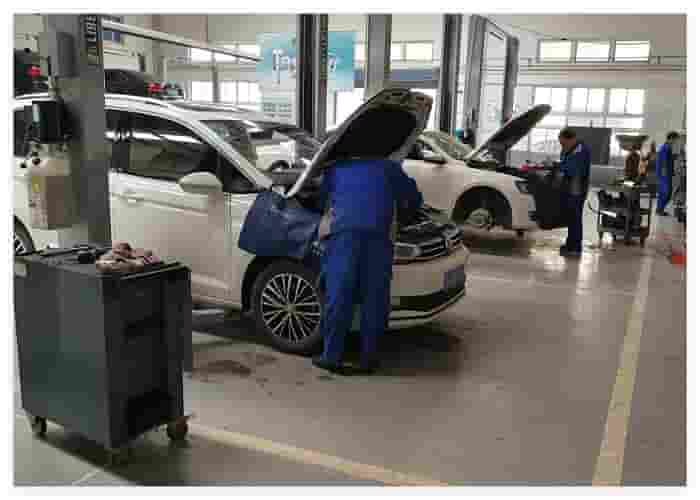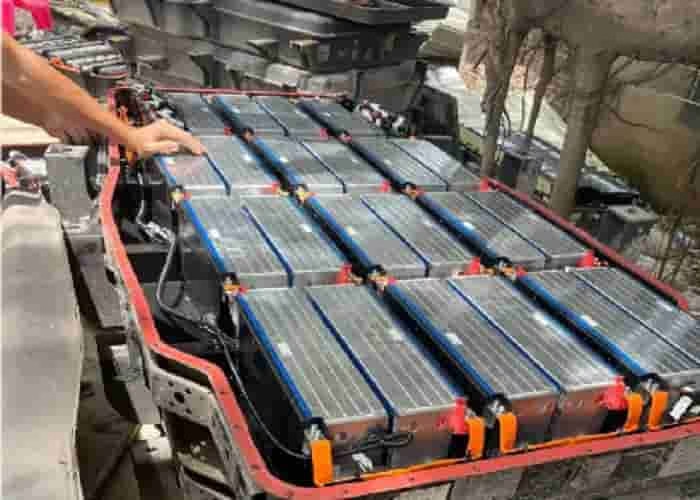I.Current status of the new energy vehicle industry
(1) Affected by the macro-economy, the global automobile market continues to be sluggish
The automobile industry is a strategic pillar industry for the development of the national economy and an important indicator of a country’s industrialization level. It is capital-intensive, technology-intensive, and talent-intensive. It has a long industrial chain, significant industry-driven benefits, and broad market prospects. However, affected by the macro-economy, the current global automobile market is relatively sluggish.
From 2015 to 2024, the global total automobile sales volume only increased from 87.56 million to 89.8 million, a cumulative increase of 2.6%, and a ten-year compound growth rate of 0.3%. During the same period, the total automobile sales volume in the Chinese market increased from 24.6 million to 31.436 million, a cumulative increase of 27%, and a ten-year compound growth rate of 2.8%.
(2) Passenger car sales in China’s automobile market continue to grow, while commercial vehicle sales overall decline
Passenger car sales: 2020 was the lowest year in my country’s passenger car sales in the past decade, reaching 20.18 million units. In the following five years, sales have continued to grow. By 2024, my country’s passenger car sales will reach 27.56 million units.
Commercial vehicle sales: Affected by the macro-economy, my country’s commercial vehicle market has continued to be sluggish, lower than expected. In the past decade, it has shown a trend of rising first and then falling. 2020 was the year with the highest commercial vehicle sales in my country, reaching 5.13 million units. In the following five years, sales continued to decline. By 2024, my country’s commercial vehicle sales will reach 3.873 million units, lower than the expected 4 million units.
(3) Overseas sales have performed well, with overseas sales increasing nearly fivefold in the past five years
Domestic sales: Slowly moving forward amid fluctuations, the overall trend is low-level and slow growth. From 2015 to 2024, my country’s domestic automobile sales increased from 23.87 million to 25.58 million, a cumulative increase of 7%, and a ten-year compound growth rate of 0.8%.
Foreign sales: In the past ten years, foreign sales have generally shown a rapid development trend, especially in the past five years, my country’s automobile exports have increased nearly fivefold, with sales increasing from 994,900 in 2020 to 5.859 million in 2024, a five-year compound growth rate of 55.8%, and a ten-year compound growth rate of 26%.
(4) With the continuous advancement of technologies such as electrification, intelligence, and networking, new energy vehicles have shown explosive growth
Global market: From 2015 to 2024, global new energy vehicle sales increased from 643,000 to 18.236 million in 2024, an increase of nearly 27 times, with an annual compound growth rate of 45%.
Chinese market: In the past decade, China’s new energy vehicle sales have increased from 331,000 to 12.866 million in 2024, an increase of nearly 38 times, with a compound annual growth rate of 50%.
(5) Passenger car market, fuel vehicle market continues to decline, and the penetration rate of new energy vehicles has risen rapidly
In the past five years, the sales of new energy vehicles and fuel vehicles in my country’s passenger car field have been very different. The average annual growth rate of new energy vehicles in the past five years was 70%, while the sales of traditional fuel vehicles fell by 9.8% annually in the past five years.
The penetration rate of new energy vehicles in my country has increased from 1.35% in 2015 to 40.94% in 2024, an increase of more than 39 percentage points. It is expected that in 2025, the penetration rate of new energy vehicles in my country will exceed 50%.
(6) The growth rate of pure electric models has slowed down, and the share of plug-in hybrid/extended-range models has continued to increase. From the perspective of development trends, since plug-in hybrid/extended-range models can greatly alleviate consumers’ mileage anxiety and provide a more flexible driving experience, they also benefit from the advancement of battery technology and the reduction of costs. Compared with pure electric models, especially in the low- and medium-priced segments, they have more competitive advantages, making plug-in hybrid/extended-range models the first choice for consumers to “enter” the new energy market. This year’s sales volume continues to grow rapidly. At present, pure electric models still occupy the main share, and the market share of plug-in hybrid and extended-range models has increased to 40%. (7) New energy vehicles are in a stage of fierce competition, and market concentration is constantly increasing. At present, my country’s new energy vehicles are in a stage of fierce competition. New energy vehicle consumption is booming, and competition has become extremely cruel. Dozens of automakers have been eliminated in the “bloody sea”, with layoffs reaching 100,000. More than 400 companies have disappeared in the past six years. In 2024, the market concentration of the top 3 new energy vehicle sales in my country will reach 51.4%, up 11.4 percentage points from the previous year; the market concentration of the top 5 will reach 65.2, up 3 percentage points from the previous year. In the current competitive landscape, the top automakers are increasingly favorable, and the market concentration is also increasing. At the same time, the market concentration of the top 10 has reached 85.5%, down 1.4 percentage points from 2023. Compared with the top 5, these mid-level automakers are under greater competitive pressure.
II.Future development characteristics of the new energy vehicle industry
(1) The market continues to grow and the penetration rate continues to increase. According to IDC forecasts, the scale of China’s new energy passenger car market will exceed 23 million in 2028, with a compound annual growth rate of 22.8%. It is expected that the market penetration rate of new energy passenger cars will exceed 50% in 2025, reaching 56%.
(2) Technology continues to innovate and is more widely used. Battery energy density continues to increase, costs gradually decrease, and lifespan is extended. New breakthroughs have been made in the research and development of all-solid-state batteries, which will further improve the performance and safety of new energy vehicles. Autonomous driving functions continue to upgrade, and the vehicle’s perception, analysis, decision-making and execution capabilities are gradually improving, moving towards a higher level of autonomous driving. Urban NOA is implemented on a large scale, and high-speed NOA and high-level intelligent driving are expected to become standard features of products priced between 100,000 and 200,000 and above, respectively.
(3) Industrial upgrading is accelerating, and industrial clustering is obvious. New energy passenger vehicle product upgrades are accelerating, and various car companies are constantly launching new models, with the product iteration speed shortened to about half a year to meet consumers’ changing needs for new energy vehicles and enhance market competitiveness. The trend of new energy vehicle industry clustering is becoming more and more obvious. For example, Anhui Province has built an integrated development pattern such as the “Hefei-Wuhu” dual-core linkage, Shenzhen has densely distributed upstream and downstream enterprises in the intelligent networked vehicle industry chain, and Chongqing strives to build a trillion-level intelligent networked new energy vehicle industry cluster.
(4) Market competition is intensifying and new brands are emerging. Traditional automakers such as BYD, Geely, and Changan have made outstanding investments and market performance in the new energy sector, and their market share has continued to expand. New brands such as Weilai, Xiaopeng, and Ideal have performed outstandingly in the mid-to-high-end market, driving the rapid development of the new energy vehicle market. At the same time, forces such as Hongmeng Zhixing and Xiaomi have risen rapidly, and market competition has become more intense.
(5) Consumer demand is diverse, and high-end demand is increasing. The sales of high-end cars priced at more than 300,000 yuan have grown rapidly. Consumers have put forward higher requirements for the appearance, interior, and configuration of passenger cars, driving various auto brands to continue to innovate and launch models and configurations that better meet consumer expectations.
(6) Policy support is increased, and future growth is expected. The government’s support policies for the new energy vehicle industry will continue to promote market growth, including subsidies, purchase tax exemptions, and charging pile construction.
(7) Rapid export growth and increased international influence. As the international influence of Chinese auto brands increases, the export market will become an important growth point for the passenger car industry.
(8) Insufficient capacity utilization and challenges still exist. Some automakers have insufficient capacity utilization and face the risk of closure, suspension, and transfer. Inventory pressure is also relatively high in certain periods, and automakers need to reasonably control production rhythm and inventory levels. The export market faces risks such as international trade frictions and tariff barriers. It is necessary to pay attention to international trade situations and policy changes, and adjust export strategies and market layout in a timely manner.
III. Six development trends of the new energy vehicle market in 2025
(1) The economic foundation that supported the explosive growth of the automobile industry no longer exists. Slow growth and long-term competition are the main themes of the auto market. Automakers should be prepared for a “long-term battle”.
(2) The first-time purchase demand is restricted and declining, and the activation of stock demand has become a new engine for market growth. Under policy stimulus, short-term sales will continue to rise steadily.
(3) The penetration rate of new energy vehicles will remain above 50% in 2025. PHEV is still the biggest growth driver, and its incremental contribution is expected to exceed 60%.
(4) Under the background of stock competition, the overall profitability of the industry is under pressure. Accelerating the construction of brand moats, building core competitiveness, and seizing the minds of users are the keys to winning the market.
(5) The consumption upgrade trend continues, and market demand is shifting to the 150,000-250,000 yuan price range (double upgrade of price and experience) and personalized models (upgrade without price increase).
(6) High-end self-driving cars are about to cross the innovation gap and gradually penetrate into mass consumption. In the second half of the game, intelligent electric technology experience and cost optimization will become the key to competition.
















Leave a Reply